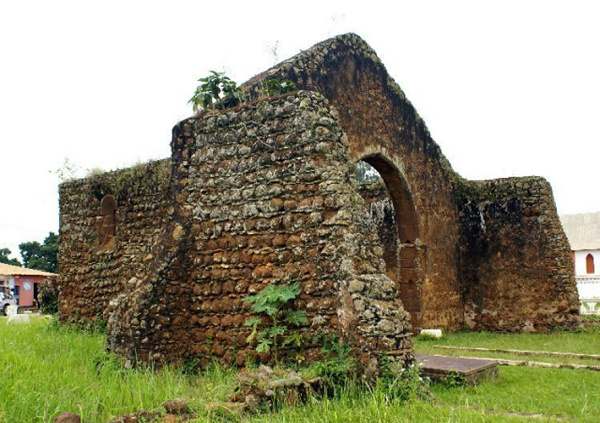This cathedral in Angola dubbed the oldest church in Sub-Saharan Africa outside of Ethiopia is a must-see

After peace returned to the country, the government started working to have the Cathedral of the Holy Saviour of Congo designated as a UNESCO World Heritage site, according to Ancient Origins.
The structure was erected in line with ancient Portuguese architecture. The rectangular-shaped edifice is no different from many cathedrals built in Portugal in the 15th and 16th centuries.
The architecture is a combination of Romanesque and Gothic styles. One part of the structure which survived the war was the windows which are reminiscent of ancient churches in Europe. A marble plaque honoring Pope John Paul II’s visit to the cathedral in 1992 greets tourists and passers-by.
The vaulted entrance is one of the delights of the cathedral. It is rumored to sit on some tombs and crypts of the royal family of the Kongo Kingdom. The edifice was built with red colored stones which were periodically whitewashed.
The cathedral sits in M’Banza Kongo which is located in Northern Angola. The city lies on the outskirts of the region and is a difficult town to access for first-time visitors. This is where the first Portuguese explorers made their first contact with the Angolans. The kingdom was made up of northern Angola and a section of the southern part of the Democratic Republic of the Congo.
Its Christian history can be traced to its monarch, Nzinga a Nkuwu, who converted to Christianity in 1485 with subsequent successors assuming the Catholic faith and taking on Portuguese names. The cathedral began as a small church in 1491 and was built by the Europeans during the reign of King Joao I.
It was renovated by King Afonso I after it was destroyed during a conflict in 1530. It was however burnt down in 1590 by marauding invaders from the east. One of the monarchs took it upon himself to repair and rebuild the edifice. In the 1590s, at the instance of Kongo monarch Alvaro II, the Catholic Church upgraded the facility to the status of a cathedral. It, therefore, became the oldest Catholic Cathedral in sub-Saharan Africa.

When the King of Portugal assumed control over the cathedral, the bilateral relations between the Portuguese and the Kingdom of Kongo grew sour and ended up in a series of wars. The kingdom was defeated in a fierce war in 1665 in the Battle of Mbwila killing the Kongo monarch. Over the next four decades, the people of Kongo could not install any monarch.
The kingdom later suffered a devastating blow in 1676 when it was ransacked and the cathedral razed. Since then, it hasn’t seen any facelift.
Source: face2faceafrica.com





